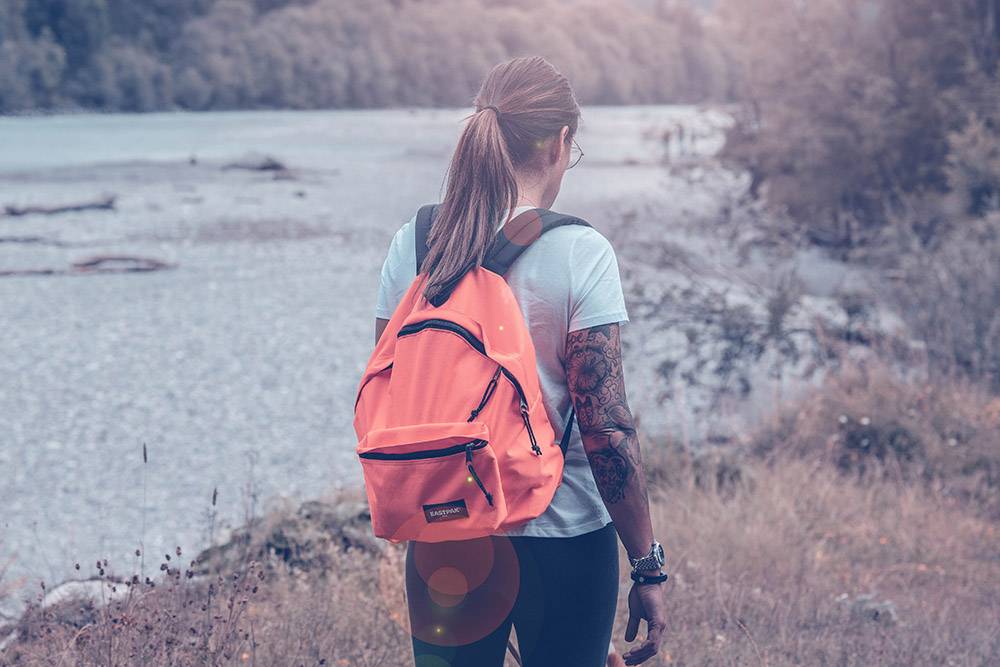
Eastpak is an American worldwide lifestyle brand founded in 1952 and headquartered in Boston, Massachusetts. It creates backpacks, bags, accessories, and travel gear for consumers around the world.
VF Corporation owns Eastpak along with The North Face, Timberland, Vans, Dickies, JanSport, Eagle Creek, among others (more than 30 outdoor, activity-based lifestyle, and workwear brands in total).
Eastpak specializes in backpacks, luggage, shoulder bags for sport, laptops, travel, and other outdoor adventures. It also creates luggage, suitcases, holdalls, tote bags, and more for the whole family.
Eastpak is committed to improving its performance and responsibility in the supply chain. Together with its parent company and other corporate siblings, it continues to adapt and innovate with creative challenges to disrupt its timeless designs.
Panaprium is independent and reader supported. If you buy something through our link, we may earn a commission. If you can, please support us on a monthly basis. It takes less than a minute to set up, and you will be making a big impact every single month. Thank you!
Sustainability Rating: 4/10
Rating FAQ
Category: Bags, accessories
For: Women, men, children
Type: Basics, luggage, backpacks
Style: Casual
Quality: Medium
Price: $$
Sizes: XS-L
Fabrics: Cotton, polyester, nylon, rubber, leather
100% Organic: No
100% Vegan: No
Ethical & Fair: Yes
Recycling: Yes
Producing country: Albania, Bangladesh, Bulgaria, Cambodia, Canada, China, Colombia, Costa Rica, Dominican Republic, El Salvador, France, Georgia, Greece, Guatemala, Haiti, Honduras, India, Indonesia, Italy, Japan, Jordan, Keny, Mauritius, Mexico, Republic Of Moldova, Morocco, Nicaragua, North Macedonia, Pakistan, Philippines, Poland, Portugal, Romania, Slovenia, Taiwan, Thailand, Turkey, Ukraine, United States, Vietnam
Certifications: no certification
Sustainability Practices
Eastpak is taking responsibility for its production process and people. It aims to protect our environment, opting for quality over quantity, donating to charity, repairing damaged goods, and using recycled fabrics.
Eastpak uses a small proportion of sustainable materials such as better cotton (BCI), recycled polyester, and regenerated nylon.
The backpack brand creates a lot of its products with polluting, synthetic, petroleum-based fibers, such as conventional polyester and nylon made from oil.
As part of VF Corporation, Eastpak uses the same supply chain as its parent company. It publishes a list of its manufacturing and processing facilities and makes it available publicly on its corporate website.
It also monitors most of its supply chain and all its main production sites to ensure compliance with social and labor standards.
The company is expanding its traceability and transparency efforts as well as collaborating with human rights experts, governments, international organizations, and non-profits to conduct ongoing human rights due diligence.
The 2020 Fashion Transparency Index gave VF Corporation a score of 59% based on how much the group discloses about its social and environmental policies, practices, and impacts. VF Corporation earned 7th place in the top 10 most transparent brands.
Eastpak doesn't use any exotic animal skin, or hair, fur, angora. But it uses leather to manufacture many of its bags and accessories.
Leather production is cruel and unethical. It also harms the environment by releasing toxic chemicals, producing greenhouse gases, and generating wastes. More sustainable alternatives exist.
Sustainability Goals
Together with VF Corporation, Eastpak commits to being a leader in the large-scale commercialization of circular business models by 2030.
It wants to contribute to local communities and empower consumers to live more active and sustainable lifestyles.
Eastpak has reduction targets for its greenhouse gas emissions in line with meeting the goals of the Paris Agreement.
It partners with global consultancy the Carbon Trust to gather data from its suppliers and plans an absolute reduction of Scope 1 and 2 greenhouse gas emissions by 55% by 2030 (2017 baseline).
Eastpak also plans an absolute reduction of Scope 3 greenhouse gas emissions by 30% by 2030 (2017 baseline) through a focus on farm-to-retail materials, sourcing operations, and logistics.
Eastpak aims to halve its upstream environmental impact, farm-to-front door by 2050. It has a system in place to improve the lives of 2 million workers and their communities by 2025.
Buy Here
Discover Eastpak sustainable collections at Eastpak.com.
Reviews And Experiences With Eastpak
Have you had (good) experiences with shopping at or the products of Eastpak? Then leave us your rating below.
What We're Up Against
Multinational corporations overproducing cheap products in the poorest countries.
Huge factories with sweatshop-like conditions underpaying workers.
Media conglomerates promoting unethical, unsustainable products.
Bad actors encouraging overconsumption through oblivious behavior.
- - - -
Thankfully, we've got our supporters, including you.
Panaprium is funded by readers like you who want to join us in our mission to make the world entirely sustainable.
If you can, please support us on a monthly basis. It takes less than a minute to set up, and you will be making a big impact every single month. Thank you.






























0 comments